📞+86 153 7530 2641 📧 hongjing.Wang@feichuncables.com

NSHTOEU-J Heavy Duty Rubber Reeling Cable – High Flexibility Reeling Cable for Mobile Equipment in Ports and Stockyards
Discover the NSHTOEU-J heavy-duty rubber reeling cable, engineered for high mechanical stress, tensile, and torsional operations. Ideal for mobile equipment such as stackers, reclaimers, and container handling systems, this UV-resistant, oil-resistant control cable meets RoHS 2015/863/EU, CPR 305/2011, and DIN VDE standards.
hongjing.Wang@Feichun
8/6/202510 min read


NSHTOEU-J Heavy Duty Rubber Reeling Cable
The NSHTOEU-J represents a pinnacle in heavy-duty rubber reeling cable engineering, specifically designed to withstand the extreme mechanical stresses encountered in Australia's bustling ports and industrial stockyards. This high-flexibility reeling cable for mobile equipment has been developed to meet the stringent demands of modern material handling operations, where reliability and durability are paramount.
In the harsh environments of Australian ports, where container handling equipment operates around the clock under challenging conditions, standard cables simply cannot deliver the performance required. The NSHTOEU-J addresses these challenges head-on, providing a robust solution that combines exceptional mechanical resilience with superior environmental protection. This cable is engineered to perform flawlessly in applications ranging from massive ship-to-shore cranes to agile reach stackers, ensuring uninterrupted power and control signal transmission even under the most demanding operational conditions.
The cable's design philosophy centres on addressing the unique challenges faced by mobile equipment operators, where simultaneous tensile and torsional stresses are commonplace. Unlike fixed installations where cables remain stationary, mobile equipment subjects cables to continuous flexing, twisting, and pulling forces that can quickly degrade inferior products. The NSHTOEU-J's advanced construction methodology ensures it not only survives these conditions but thrives in them, delivering consistent performance throughout its extended service life.
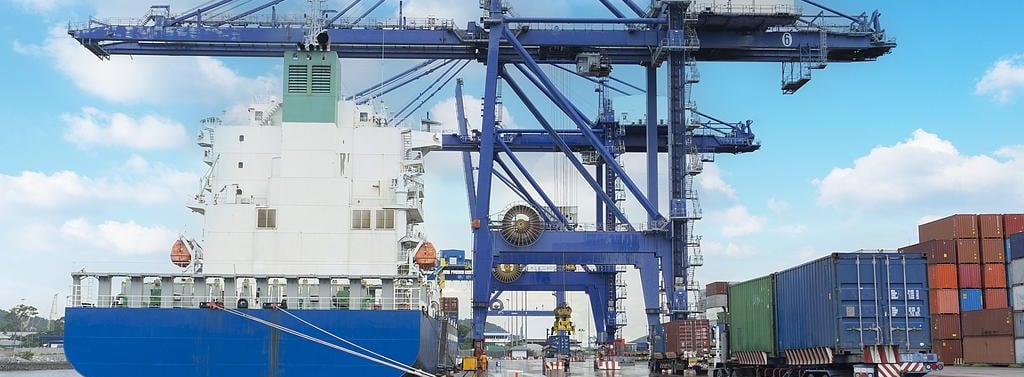

Key Features and Benefits
Mechanical Resilience: Engineered for Extreme Conditions
The NSHTOEU-J cable demonstrates exceptional mechanical resilience through its sophisticated construction. With tensile load specifications of 15 N/mm² for static applications and 20 N/mm² for dynamic operations, this cable can withstand the substantial pulling forces encountered during container handling and material movement operations. The cable's ability to handle torsional stresses of ± 25°/m makes it particularly suitable for applications involving rotating equipment and complex cable routing scenarios.
The bending radius specifications are equally impressive, with minimum bending radii carefully calculated to prevent cable damage whilst maintaining flexibility. For fixed installations, the cable requires only 4 times the cable diameter as minimum bending radius, whilst reeling applications require 6 times the diameter, and deflection pulleys necessitate 7.5 times the diameter. These specifications ensure the cable can navigate the tight spaces and complex routing requirements typical of mobile equipment installations.
Environmental Protection: Built for Australian Conditions
Australian ports and stockyards present unique environmental challenges, from intense UV radiation to salt-laden coastal atmospheres. The NSHTOEU-J cable incorporates comprehensive environmental protection features that make it ideally suited to these conditions. Its UV resistance ensures the outer sheath maintains integrity despite prolonged exposure to harsh sunlight, whilst its ozone resistance prevents degradation from atmospheric pollutants commonly found in industrial environments.
The cable's moisture resistance capabilities are particularly crucial in coastal applications where high humidity and salt spray are constant concerns. The heavy-duty rubber sheath compound provides an effective barrier against moisture ingress, maintaining electrical integrity and preventing corrosion of internal conductors. This environmental protection extends the cable's service life significantly compared to standard alternatives, reducing maintenance requirements and operational downtime.
Temperature Performance: Consistent Operation Across Extremes
Operating temperature ranges are critical considerations for mobile equipment applications, where cables may be exposed to both extreme heat from machinery and cold conditions during overnight operations. The NSHTOEU-J cable operates reliably across a temperature range of -40°C to 80°C, with fixed installation capabilities extending from -40°C to 80°C and reeling operations maintaining performance from -30°C to 80°C.
The cable's conductor temperature rating of 90°C maximum provides substantial thermal headroom for high-current applications, whilst the short-circuit temperature rating of 200°C ensures safety during fault conditions. These thermal specifications are particularly important for high-power applications such as container crane hoist motors and travel drives, where thermal cycling can rapidly degrade inferior cables.
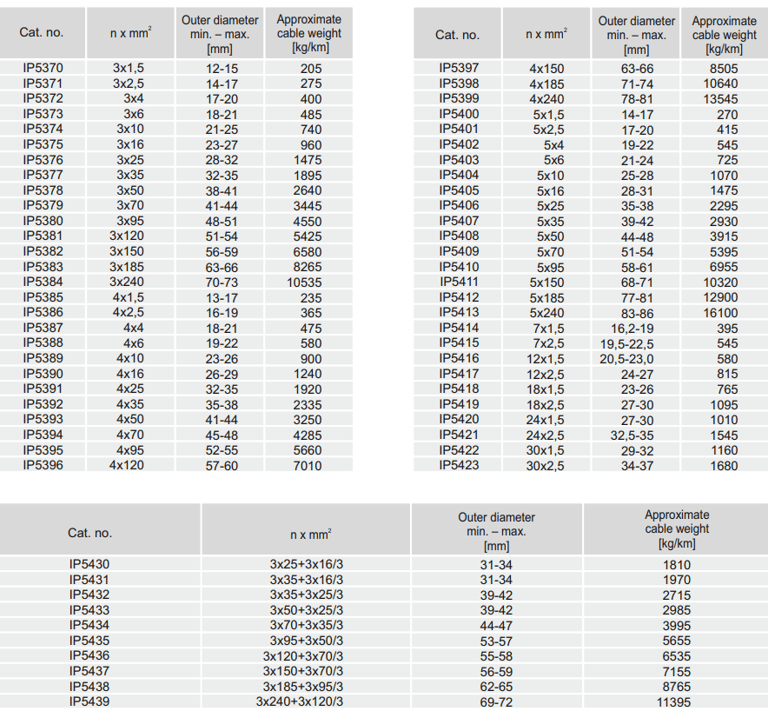

Technical Specifications
Conductor Construction: Precision Engineering for Reliability
The NSHTOEU-J cable employs tinned copper conductors manufactured to IEC 60228 Class 5 specifications, ensuring maximum flexibility and conductivity. The fine stranding of these conductors provides exceptional flexibility whilst maintaining low electrical resistance, crucial for both power transmission and control signal integrity. Conductor tinning provides enhanced corrosion resistance, particularly important in marine environments where salt contamination is prevalent.
Ground conductors utilise identical construction methodologies, ensuring consistent performance and longevity across all conductors within the cable. The precision stranding process employed in manufacturing ensures each conductor maintains its specified cross-sectional area and electrical characteristics throughout the cable's service life, even under continuous flexing conditions.
Insulation and Sheath Systems: Multi-Layer Protection
The cable's insulation system employs EPR (Ethylene Propylene Rubber) compound type 3GI3, manufactured according to DIN VDE 0207-20 specifications. This insulation provides excellent electrical properties whilst maintaining flexibility across the cable's operating temperature range. Core colours comply with DIN VDE 0293-308 standards, ensuring proper identification during installation and maintenance procedures.
The cable's protective system incorporates both inner and outer sheaths manufactured from heavy-duty rubber compound quality 5GM3, conforming to DIN VDE 0207-21 standards. Between these sheaths, a synthetic fibre braid provides additional mechanical protection whilst maintaining flexibility. This multi-layer approach ensures comprehensive protection against mechanical damage, environmental contaminants, and electrical interference.
Electrical Parameters: Engineered for Power and Control
The NSHTOEU-J cable is rated for 0.6/1 kV operation, with maximum permissible operating voltages of 0.7/1.2 kV for AC systems and 0.9/1.8 kV for DC applications. The AC test voltage of 2.5 kV provides substantial safety margins for normal operation whilst ensuring reliable insulation performance throughout the cable's service life.
Reeling speed capabilities of up to 120 metres per minute make this cable suitable for high-speed mobile equipment applications, including rapid container handling operations and emergency positioning systems. These specifications ensure the cable can meet the demanding operational requirements of modern automated container terminals and bulk material handling facilities.
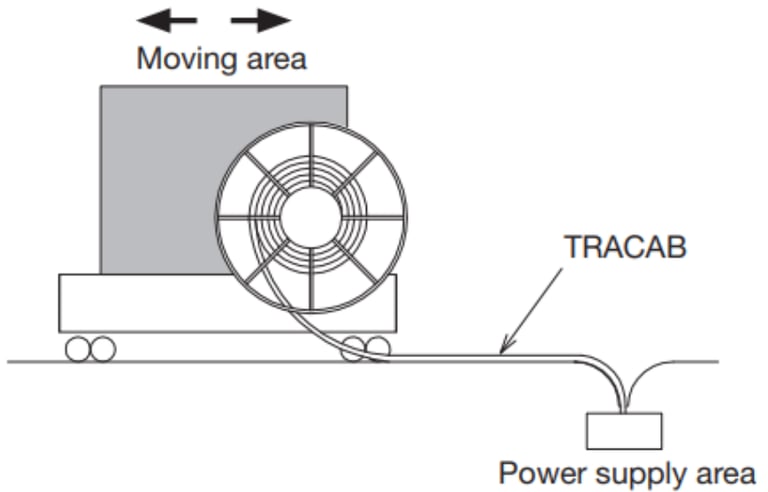



Applications in Mobile Equipment
Port and Terminal Applications
The NSHTOEU-J cable excels in demanding port environments where reeling power cable for container handling equipment must perform reliably under extreme conditions. Ship-to-shore cranes represent one of the most challenging applications, where cables must supply power to massive hoist motors whilst accommodating the crane's trolley and gantry movements. The cable's ability to handle simultaneous tensile and torsional loads makes it ideally suited to these applications.
Container handling equipment including reach stackers, empty container handlers, and rubber-tyred gantry cranes benefit significantly from the NSHTOEU-J's robust construction. These machines require reliable power and control signal transmission whilst operating in confined spaces with frequent directional changes. The cable's superior flexibility and mechanical resilience ensure consistent performance even during rapid load cycles and emergency stops.
Stockyard and Bulk Material Handling
Stockyard applications present unique challenges where UV-resistant reeling cable for mobile equipment must withstand prolonged outdoor exposure whilst maintaining operational reliability. Stacker-reclaimers operating in coal terminals, iron ore facilities, and grain handling installations subject cables to continuous flexing combined with exposure to abrasive dust and extreme weather conditions.
The NSHTOEU-J cable's comprehensive environmental protection makes it particularly suitable for these applications. Its resistance to oil contamination is crucial in heavy machinery applications where hydraulic fluid spillage is common. The cable's ability to maintain performance despite exposure to industrial chemicals and cleaning agents ensures reliable operation in diverse bulk material handling environments.
Reel System Compatibility
Modern mobile equipment utilises various reel systems depending on operational requirements and space constraints. The NSHTOEU-J cable is fully compatible with motor-driven mono spiral reels, cylindrical reels, and spring-operated reel systems. This versatility allows equipment designers to select the most appropriate reel system for specific applications whilst maintaining confidence in cable performance.
Mono spiral reels are particularly common in container crane applications where space efficiency is crucial. The cable's construction allows it to be wound in tight spirals without compromising electrical or mechanical integrity. Cylindrical reels, often employed in stockyard equipment, benefit from the cable's ability to maintain consistent performance during frequent winding and unwinding cycles.

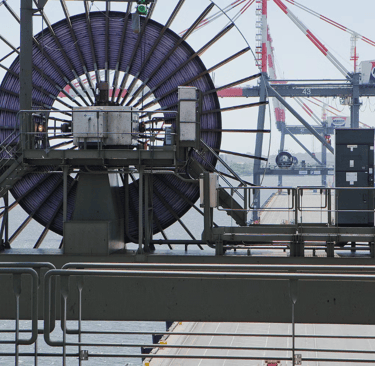
Compliance and Standards
International Certification Standards
The NSHTOEU-J cable meets multiple international standards ensuring compliance with global safety and performance requirements. RoHS 2015/863/EU compliance eliminates hazardous substances from the manufacturing process, ensuring environmental responsibility throughout the product lifecycle. CPR 305/2011 compliance addresses construction product regulations, ensuring the cable meets European Union requirements for building and infrastructure applications.
EN 60332-1-2 flame retardancy certification ensures the cable will not propagate fire in the event of ignition, crucial for applications in enclosed spaces or near combustible materials. This certification provides peace of mind for operators and regulatory authorities, particularly important in port environments where fire safety is paramount.
Oil Resistance and Chemical Compatibility
EN 60811-404 oil resistance certification ensures the cable maintains integrity when exposed to hydraulic fluids, lubricating oils, and other industrial chemicals common in mobile equipment applications. This certification is particularly important for oil-resistant control cable for stackers and reclaimers, where hydraulic system leakage is a common occurrence.
The cable's chemical resistance extends beyond oil to include resistance to cleaning agents, de-icing compounds, and other chemicals commonly encountered in industrial environments. This broad chemical compatibility reduces maintenance requirements and extends service life, providing significant operational cost benefits.
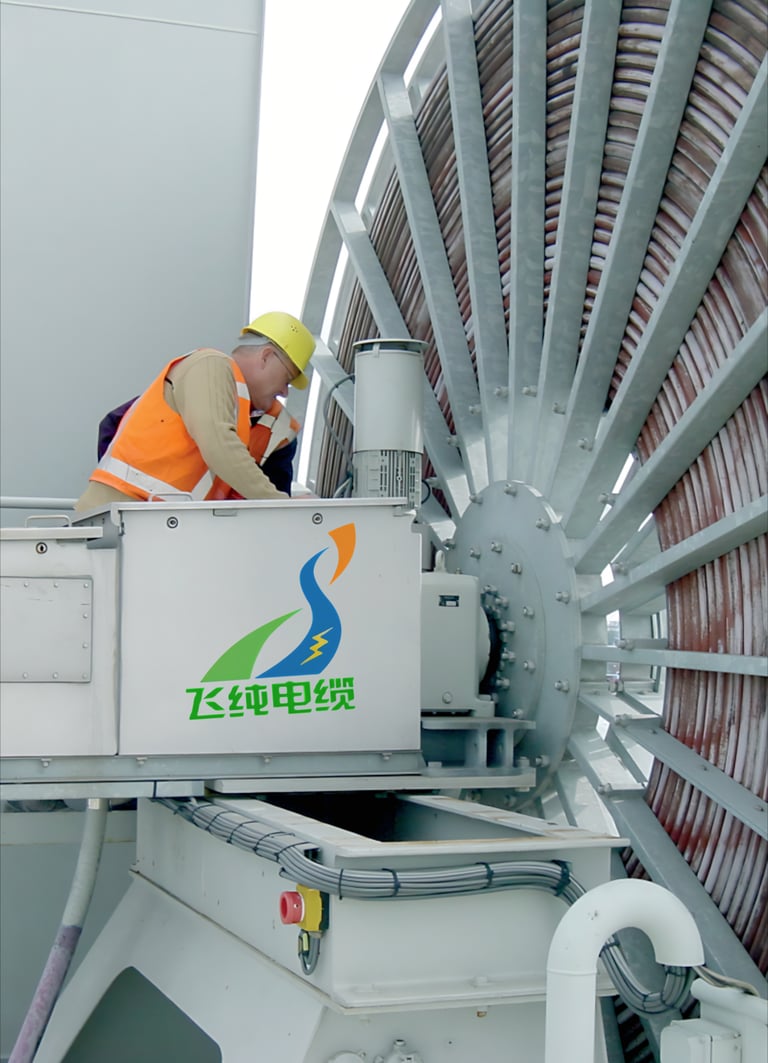

Installation, Maintenance, and De-Rating
Installation Guidelines and Best Practices
Proper installation is crucial for achieving optimal performance from high mechanical stress rubber reeling cable applications. The NSHTOEU-J cable requires careful attention to bending radius limitations during installation to prevent damage to conductors or insulation systems. Installation teams must ensure minimum bend radii are maintained at all points along the cable route, particularly at connection points and reel interfaces.
Cable routing must consider the dynamic forces encountered during equipment operation. Sharp edges, abrasive surfaces, and pinch points must be eliminated or protected to prevent mechanical damage during operation. Proper cable guides and support systems ensure the cable follows intended paths whilst accommodating the mechanical stresses inherent in mobile equipment operation.
Maintenance Protocols and Service Intervals
Regular inspection and maintenance protocols are essential for maximising cable service life and maintaining operational safety. Visual inspection should be conducted monthly, focusing on outer sheath condition, connection integrity, and proper cable routing. Any signs of mechanical damage, chemical contamination, or excessive wear should trigger immediate investigation and remedial action.
Electrical testing should be performed annually or following any suspected fault condition. This testing should include insulation resistance measurements, conductor continuity verification, and earth continuity testing. Thermal imaging during operation can identify developing problems before they result in failure, allowing proactive maintenance scheduling.
Thermal De-Rating Considerations
Thermal de-rating factors according to DIN VDE 0298-4 must be applied when cables are operated in elevated temperature environments or when multiple cables are grouped together. These factors ensure conductor temperatures remain within safe limits whilst maintaining adequate current-carrying capacity for the intended application.
Reeling applications may require additional de-rating considerations due to the reduced heat dissipation when cables are wound on reels. Equipment designers must account for these factors when specifying cable current ratings and selecting appropriate cross-sectional areas for specific applications.

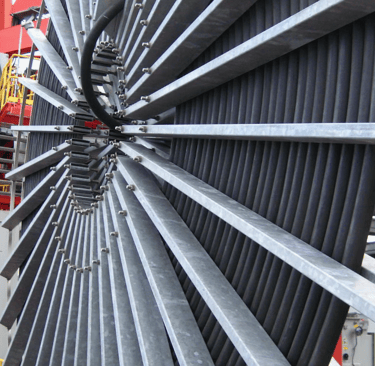
Model Variants and Ordering Information
Cross-Sectional Area Options
The NSHTOEU-J cable is available in numerous configurations to meet diverse application requirements. Power cable variants range from 4×150 mm² to 5×240 mm² for high-current applications, whilst control cable versions are available from 5×1.5 mm² to 30×2.5 mm². This comprehensive range ensures appropriate solutions are available for applications ranging from small auxiliary systems to main propulsion drives.
Outer diameter specifications range from 14-17 mm for the smallest control configurations to 83-86 mm for the largest power variants. Cable weights range from 270 kg/km for light control applications to 16,100 kg/km for heavy power installations. These specifications allow precise matching of cable characteristics to application requirements whilst optimising installation costs and reel system sizing.
Custom Configuration Capabilities
Recognising the diverse requirements of modern mobile equipment applications, custom core counts and cable lengths are available upon request. This flexibility allows equipment designers to specify exactly the conductor configuration required for their specific application, eliminating unnecessary conductors whilst ensuring adequate capacity for current and future requirements.
Special marking and identification options are available to facilitate cable identification during installation and maintenance procedures. Custom outer sheath colours can be specified for applications requiring visual identification or corporate colour matching. These customisation options ensure the cable integrates seamlessly with existing equipment colour schemes and maintenance protocols.
Conclusion and Key Takeaways
The NSHTOEU-J heavy-duty rubber reeling cable represents a significant advancement in mobile equipment cable technology, delivering exceptional performance in the demanding environments encountered in Australian ports and stockyards. Its comprehensive feature set, including superior mechanical resilience, extensive environmental protection, and broad temperature operating range, makes it the ideal choice for critical mobile equipment applications.
The cable's compliance with international standards ensures global acceptability whilst its robust construction provides the reliability essential for continuous industrial operations. From massive container cranes to agile material handling equipment, the NSHTOEU-J cable delivers consistent performance that equipment operators can depend upon.
For operations seeking to maximise equipment uptime whilst minimising maintenance costs, the NSHTOEU-J cable offers compelling advantages. Its extended service life, reduced maintenance requirements, and superior performance characteristics provide excellent return on investment for discriminating industrial users.
Contact your cable supplier today to discuss specific application requirements and obtain detailed specifications for your mobile equipment installations. Sample cables are available for evaluation, allowing you to experience the NSHTOEU-J's superior performance characteristics firsthand before committing to full installations.
FAQs About NSHTOEU-J Cable Issues
Q: What are the most common failure modes for reeling cables in mobile equipment applications?
A: The most common failure modes include conductor breakage due to excessive bending or twisting, insulation degradation from environmental exposure, and mechanical damage to outer sheaths from abrasion or impact. The NSHTOEU-J cable addresses these issues through its Class 5 fine-stranded conductors, EPR insulation system, and dual-sheath protection with synthetic fibre reinforcement.
Q: How do I determine the appropriate cable size for my container handling equipment?
A: Cable sizing depends on the electrical load requirements, voltage drop calculations, and thermal de-rating factors. Consider the maximum current draw of your equipment, the cable length from power source to load, and any thermal de-rating required for reeling applications. Consult the DIN VDE 0298-4 de-rating factors and engage with qualified electrical engineers for critical applications.
Q: What maintenance indicators should I monitor to prevent unexpected cable failures?
A: Key indicators include outer sheath cracking or abrasion, discolouration suggesting overheating, irregular conductor resistance measurements, and reduced insulation resistance values. Establish baseline measurements during installation and monitor trends over time. Any sudden changes warrant immediate investigation.
Q: Can the NSHTOEU-J cable be repaired if damaged, or must it be completely replaced?
A: Minor outer sheath damage can sometimes be repaired using appropriate industrial tape systems, but conductor damage or insulation compromise typically requires cable replacement. Given the critical nature of mobile equipment applications, replacement is generally recommended over field repairs to ensure continued reliability and safety compliance.
Q: How do environmental factors in Australian coastal conditions affect cable longevity?
A: Australian coastal environments present challenges including UV radiation, salt spray, temperature extremes, and high humidity. The NSHTOEU-J cable's UV-resistant outer sheath, moisture barriers, and corrosion-resistant tinned conductors provide comprehensive protection against these factors, significantly extending service life compared to standard industrial cables.
How to Reach Us
Get in Touch
SiteMap
Product Catalogue
Reeling Cable
Festoon Cable
Shore Power Cable




Scan to add us on WeChat
